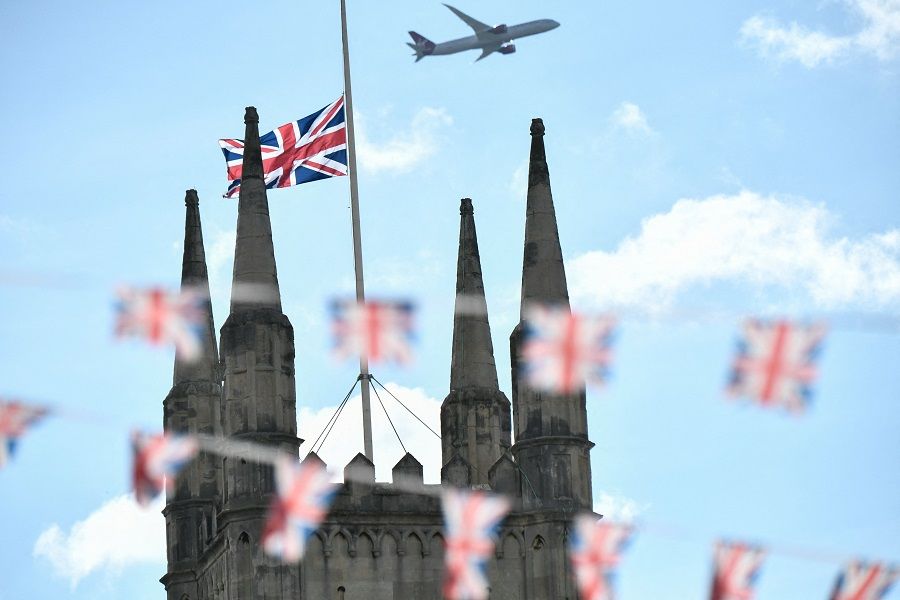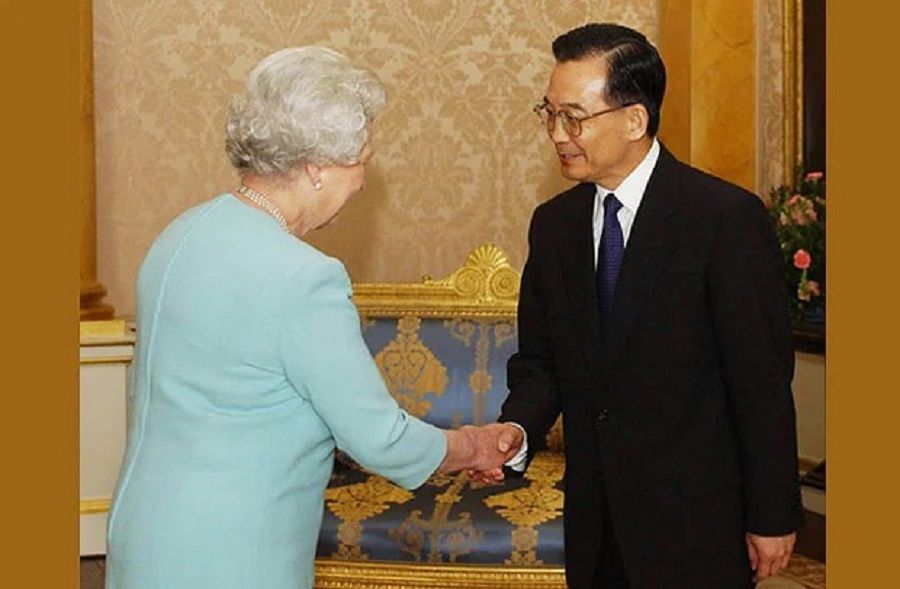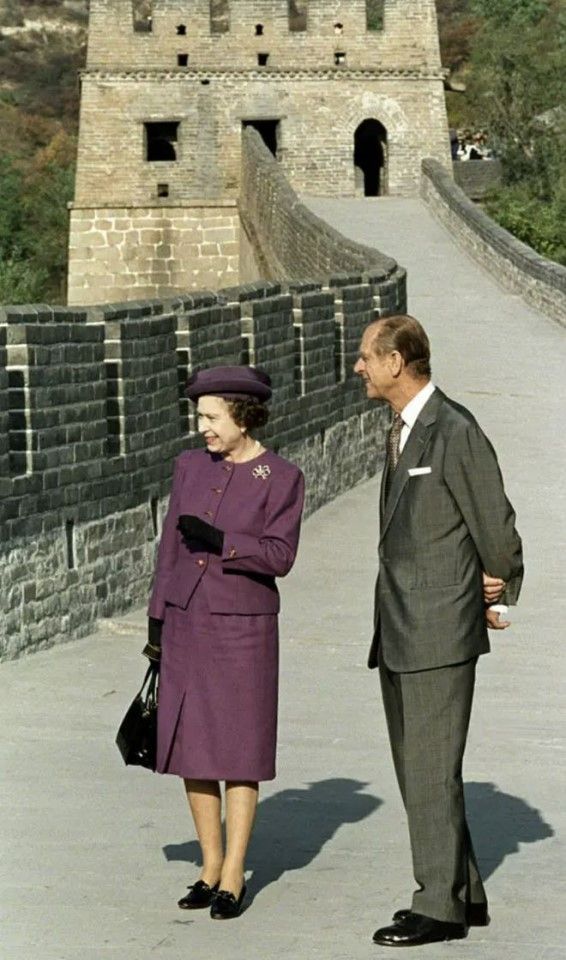Queen Elizabeth II: The British monarch who reigned longer than Emperor Kangxi

Queen Elizabeth II passed away at 96 years old on 8 September after leading a life that witnessed both turmoil and glory, and the ups and downs of the times.
She was Britain's longest-serving monarch, reigning nine years longer than Emperor Kangxi, China's longest-reigning monarch. During her 70-year reign, the Queen maintained a special bond with China through the highs and lows of China-UK relations.

Chinese leaders meet the Queen
The UK was one of the first countries to recognise the People's Republic of China (PRC) when it was established in 1949. Diplomatic relations between the two countries were established at the chargé d'affaires level in 1954 and then at the ambassadorial level in 1972.
Then Chinese Premier Hua Guofeng was the first Chinese head of state to visit the UK in 1979, receiving a grand reception at Buckingham Palace hosted by Queen Elizabeth II. However, China-UK relations were dominated by negotiations on Hong Kong's future in the years that followed, as both sides focused their energy on the issue.
On 19 December 1984, then Chinese Premier Zhao Ziyang and British Prime Minister Margaret Thatcher signed the Sino-British Joint Declaration, setting the conditions in which Hong Kong was transferred to PRC control and for the governance of the territory from 1 July 1997.

Thereafter, China-UK relations entered a honeymoon period. Chinese Premier Zhao Ziyang and Chinese Communist Party (CCP) General Secretary Hu Yaobang visited the UK, while Queen Elizabeth II became the first British monarch to visit China in October 1986 - the only trip she made to mainland China.
Following the handover of Hong Kong in 1997, China-UK relations entered a new chapter. Then Chinese Premier Zhu Rongji visited the UK in 1998; in October 1999, Chinese President Jiang Zemin reciprocated Queen Elizabeth II's China visit in 1986, becoming the first Chinese head of state to visit the UK. During the grand banquet at Buckingham Palace, the Queen mentioned the "coincidence" of being born in the same year as Jiang in 1926, the Year of the Tiger.


In November 2005, then Chinese President Hu Jintao visited the UK. The Queen also received the two subsequent Chinese premiers after Zhu Rongji - Wen Jiabao and Li Keqiang - during their visits to the UK in 2004 and 2014 respectively. The premiers met the Queen at Windsor Castle, her official residence outside of London and where she spent most of her time.

During his visit to the UK in October 2015, Chinese President Xi Jinping received a ceremonial welcome from the Queen, who also hosted a private lunch for Xi and his wife. The late Queen even posted five tweets on her official Twitter account in anticipation of the visit.
Queen delivers a letter to China after 390 years
Since the Queen's passing, several Chinese media have recalled her visit to China 36 years ago. On 12 October 1986, the Queen arrived at Beijing Capital International Airport and became the first British head of state to visit mainland China.
The Queen met with CCP's then paramount leader Deng Xiaoping, CCP General Secretary Hu Yaobang and Chinese President Li Xiannian. She and her husband Prince Philip visited Beijing, Shaanxi, Guangdong and Yunnan, and saw ancient sights such as the Palace Museum, Great Wall and terracotta warriors.



The Queen also delivered to Li a letter written 390 years ago in 1596 by Elizabeth I to Emperor Wanli of the Ming dynasty, expressing hopes of developing trade between England and China. The letter never arrived in China as the messenger met with misfortune.
In delivering the letter, the Queen quipped, "Fortunately, postal services have improved... Your message inviting us here arrived safely, and it has given me great pleasure to accept it."
Two visits to Hong Kong
The Queen was warmly welcomed during her visits to Hong Kong in 1975 and 1986. On her first visit, she toured the street market at Graham Street in Central and Oi Man Estate in Ho Man Tin, and was approachable and down to earth in her interactions with the locals. In a memorable scene, the Queen smiled brightly as she conversed with a crowd of curious children surrounding her at Morse Park Swimming Pool in Wong Tai Sin.


After her visit to mainland China in 1986, the Queen went to Hong Kong and attended The Queen's Visit Youth Spectacular at the Hong Kong Coliseum, featuring performances from Hong Kong stars Jackie Chan, Kenny Bee, Jacky Cheung, as well as Leslie Cheung, who had the honour of representing the artists in shaking the Queen's hand.
A beautiful goodbye
In a statement released on the evening of 8 September, Buckingham Palace announced that the Queen was under medical observation as doctors were concerned about her health. The people in mainland China and Hong Kong followed the news through the night.
Upon her passing, netizens in mainland China and Hong Kong expressed condolences and wished her eternal peace. Hong Kong netizens shared on social media photographs of the Queen's first visit in 1975 as well as the commemorative coins, and memorialised her with a line from the song Queen's Road East (《皇后大道东》): "This beautiful friend is beautiful even when saying goodbye." The 1991 song was composed by Lo Ta-yu and written by Albert Leung, describing Hong Kongers' feelings about returning to China in 1997.

In mainland China, news of the Queen's passing became a trending search on Weibo. One netizen lamented, "At this moment, I can clearly feel the passage of history."
As the wheels of time move ever forward, a familiar face for many fades from the stage. When this is someone like Queen Elizabeth, who has been called the "cornerstone of our country" by the British, it surely lends that much more anxiety over an uncertain future.
Editor's note:
On 18 September, Chinese Vice-President Wang Qishan attended Queen Elizabeth II's lying-in-state at Westminster Hall, and will be attending the Queen's state funeral on 19 September. This comes after a request from Chinese officials to attend the lying-in-state was reportedly rejected due to Chinese sanctions on British parliamentarians who have criticised China's treatment of its Uighur minority in Xinjiang.
Related: One country, two systems: Can Hong Kong hold on to its characteristics? | 25 years after the handover: The 'end for Hong Kong' or just the beginning? | The Opium Wars: When China's 'century of shame' began | [Picture story] The Sino-French War of 1884 and the collapse of Western colonialism
